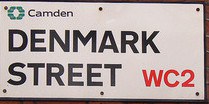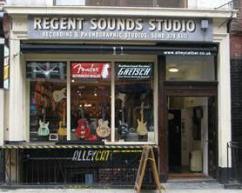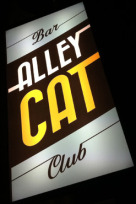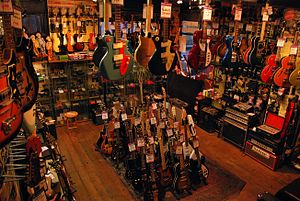Tags
 For anyone with an interest in popular music history, a visit to Denmark Street in Soho is like a walk down memory lane. Yet while many visitors strive to see Abbey Road, most ignore this location despite the fact that it is arguably London’s more significant location for music history. In addition, several venues provide a way to experience the current music scene in a live and historically meaningful way.
For anyone with an interest in popular music history, a visit to Denmark Street in Soho is like a walk down memory lane. Yet while many visitors strive to see Abbey Road, most ignore this location despite the fact that it is arguably London’s more significant location for music history. In addition, several venues provide a way to experience the current music scene in a live and historically meaningful way.
While the original Tin Pan Alley was a specific place in Manhattan that developed at the end of the 19th Century as the hub for the music industry, the term has become synonomous for any area with a high concentration of music publishers, vendors and recording studios. In Soho, Denmark Street (between Charing Cross Rd and St. Giles High St) became London’s Tin Pan Alley from the late 19th Century onwards, with its heyday from the 1960s to the 1970s. There is still plenty to offer the visitor today as the street is lined with specialist music shops, eateries, bars and performance venues.
In the 1890s sheet music publishers set up business here focusing on a trade with all the nearby theatres. By the early 1900s shops selling pianos and musical instruments started appearing. Later came the recording studios and finally the live performance venues.
Regent Sounds Studio: One of the most significant addresses here is 4 Denmark  Street - home to Regent Sounds Studio (now Regent Sounds) - which was established in the late 50s as an independent recording studio. In 1961 the then owner, Ralph Elman, sold the studio to James Baring (heir of Barings Bank) who embraced the independent music culture and had become friends with many of the musicians who frequented the street. In early 1964 the Rolling Stones recorded their first album creatively titled ’The Rolling Stones’ here. After that the list of now famous musicians who recorded here is like a who’s who in music. The list includes the Elton John, the Kinks, Black Sabbath and Jimi Hendrix. There are some great historic pictures of artists recording here in the day on Regent Sounds website: http://regentsounds.com/history
Street - home to Regent Sounds Studio (now Regent Sounds) - which was established in the late 50s as an independent recording studio. In 1961 the then owner, Ralph Elman, sold the studio to James Baring (heir of Barings Bank) who embraced the independent music culture and had become friends with many of the musicians who frequented the street. In early 1964 the Rolling Stones recorded their first album creatively titled ’The Rolling Stones’ here. After that the list of now famous musicians who recorded here is like a who’s who in music. The list includes the Elton John, the Kinks, Black Sabbath and Jimi Hendrix. There are some great historic pictures of artists recording here in the day on Regent Sounds website: http://regentsounds.com/history
 Today the ground floor houses the newly reopened Regent Sounds - an independent music shop specializing in the sale of Fender and Gretsch guitars - while downstairs is the AlleyCat Bar/Club - open daily from 5pm til late - offering a variety of live music from Blues to Jazz. See their website for specific events: http://www.alleycatbar.co.uk
Today the ground floor houses the newly reopened Regent Sounds - an independent music shop specializing in the sale of Fender and Gretsch guitars - while downstairs is the AlleyCat Bar/Club - open daily from 5pm til late - offering a variety of live music from Blues to Jazz. See their website for specific events: http://www.alleycatbar.co.uk
Denmark Street: Many of the other shops on this street have a similar history and each one is worth exploring. But the street is really the most significant as the names on the doors do change over time. On this street Bob Marley bought his first guitar; David Bowie lived on this street in a camper van; Reg Dwight (now Elton John) worked here as an office boy at Mills Music (#20 Denmark St); Music magazines were published here - including NME (#5) and Melody Maker (#19); the now closed Gianconda Cafe (now Giancoda Dining Room) at #9 was the hangout for the Sex Pistols, David Bowie, the Slits and the Clash; and finally, the Sex Pistols lived
and recorded upstairs at #6.
This is just a selection of the storied history of this small street to nowhere. A visit here can include a little shopping, eating, drinking and live music - but most importantly a step back in time.
Location: Denmark Street
Closest tube: Tottenham Court Road


Pingback: London Links: Weekend 13 | Little London Observationist
hi there im PHILL WARD i was one of the sound engineers in the early seventies with another guy called jim great guy and great place [email protected]
Hi Phil, thanks for reading the blog and for your comment. Ian
Fascinating. I didn’t know much of this at all.
I’m glad you liked the post. Thanks for reading. Ian.